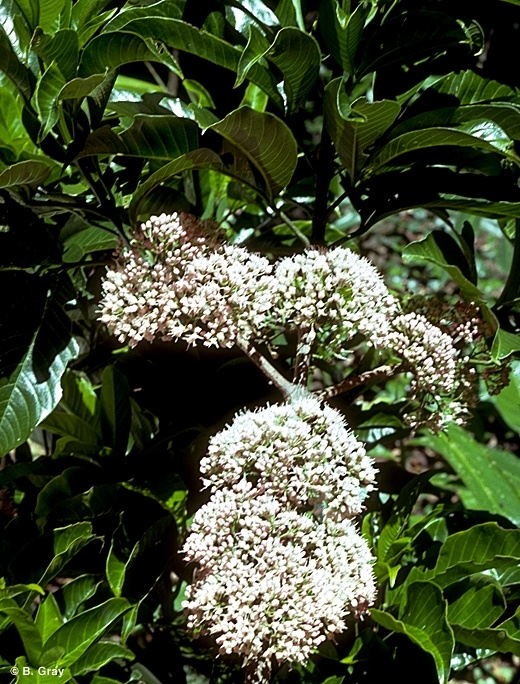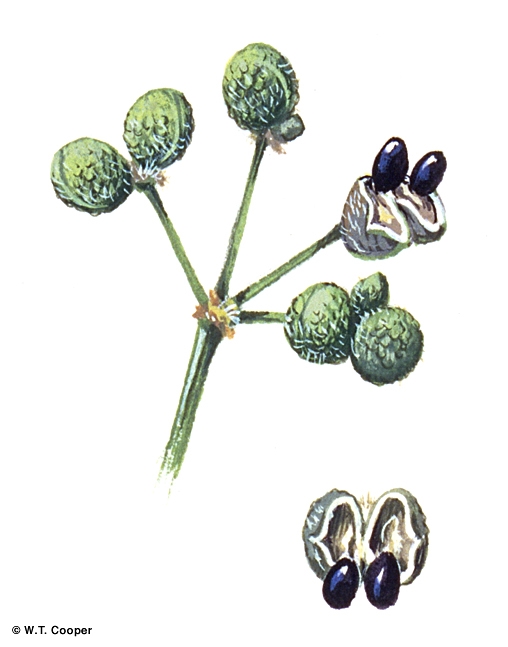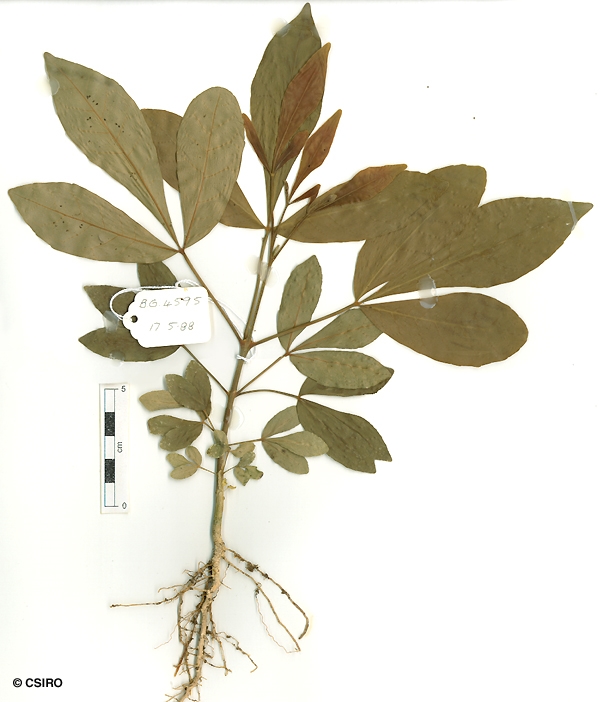Australian Tropical Rainforest Plants - Online edition
Melicope bonwickii (F.Muell.) T.G.Hartley





Hartley, T.G. (1994) Sandakania 4: 56.
Yellow Evodia; Yellow Corkwood
Lenticels quite large. White, granular, vertical stripes in the outer blaze.
Inflorescences produced on the branches below or back from the leaves. Sepals +/- orbicular, about 1.5-2 mm long. Petals about 4-6 mm long, glabrous on the outer surface, but pubescent on the inner surface. Staminal filaments glabrous. Disk 8-lobed but continuous, pubescent, surrounding the ovary. Ovary pubescent.
Individual fruiting carpels about 4-6 mm long. Seeds about 2-3 mm diam. Aril shiny black on the outer surface, completely enclosing the seed. Testa tuberculate rugose.
Cotyledons elliptic, margin finely crenate. Oil dots small, visible with a lens. At the tenth leaf stage: leaf trifoliolate, lateral leaflets unequal-sided at the base; upper surface of leaflet with a few short hairs along the midrib; oil dots small, sparse, more numerous towards the apex. Seed germination time 33 to 67 days.
Occurs in NEQ and CEQ. Altitudinal range from near sea level to 800 m. Grows in well developed lowland and upland rain forest but probably reaching its best development on soils derived from basalt. This species is favoured by disturbance and as it is a fast growing species it can compete quite successfully with the regrowth species. When this species flowers, large numbers of birds are attracted and the noise emanating from the assemblage suggests that there may be an ingredient in the nectar which modifies their normal behaviour. Also occurs in Malesia (the Philippines, Borneo, Java and New Guinea).
Food plant for the larval stages of the Ulysses Butterfly. Common & Waterhouse (1981).
A tree now commonly planted for the massed display of pale pink flowers which attract numerous bird species.
The flowers of this species are very popular with nectar or pollen feeding birds particularly parrots. The noise emanating from flocks of these birds feeding in flowering trees suggests that there may be components in addition to simple nectar and pollen in their fare.
Produces a useful general purpose timber.
Wood specific gravity 0.46. Cause et al. (1989).





